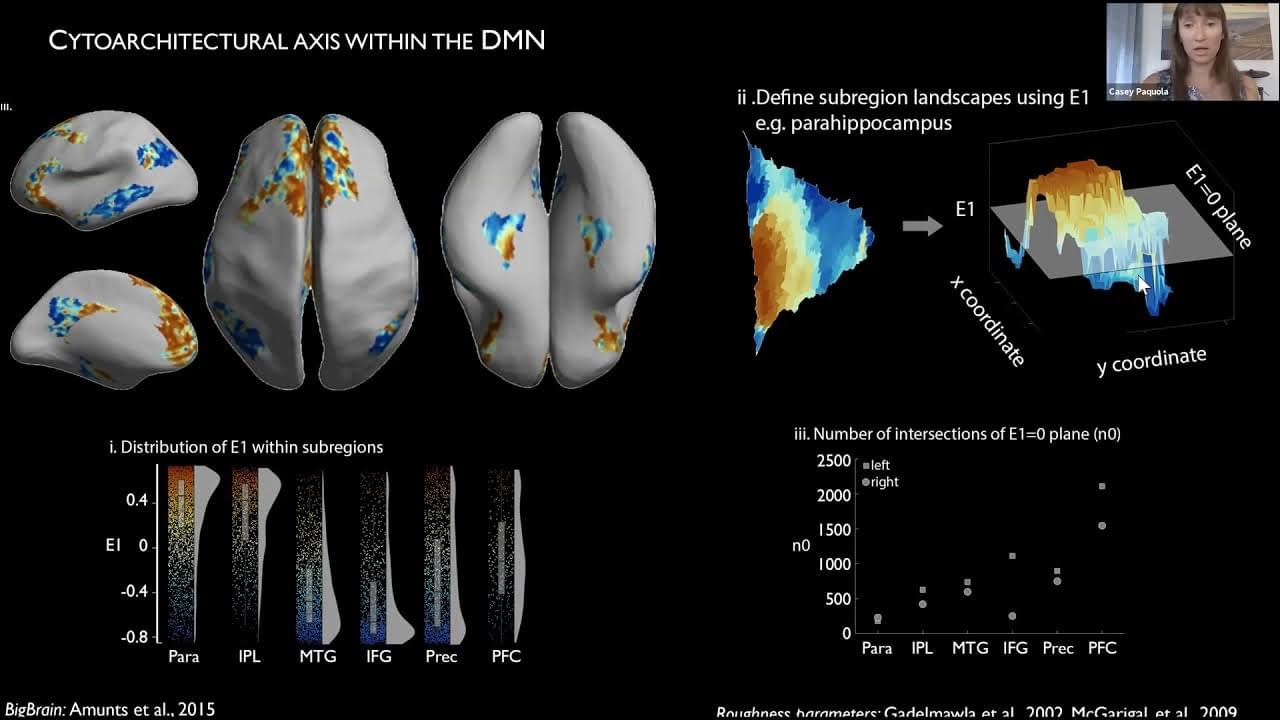5th BigBrain Workshop 2021
22 September 2021 — Applications.
Chair: Kathleen Rockland.
The Unique Cytoarchitecture and Wiring of The Default Mode Network.
Casey Paquola.
Background. Complex behaviours benefit from parallel distributed processing in multiple brain networks. The roles of certain networks are well-defined, while others remain elusive. Arguably, none are so elusive as the default mode network (DMN); a distributed set of brain regions that decrease in activity during many externally oriented tasks. Revealing the cytoarchitectural composition and connectional layout of the DMN is crucial to defining its role in complex behaviours.
Method. We examined the cytoarchitectural composition of the DMN using an established cortical type atlas (García-Cabezas et al., 2020; Von Economo and Koskinas, 1925) and by applying non-linear dimensionality reduction to BigBrain-derived staining intensity profiles (Paquola et al., 2019). Next, we used magnetic resonance imaging (MRI) to explicate structural wiring and effective connectivity of the whole brain. In both modalities, we examined the influence of cytoarchitecture on extrinsic connectivity of the DMN. Finally, we evaluated the uniqueness of the DMN relative to other large-scale functional brain networks.
Results. We discovered profound diversity of DMN cytoarchitecture. Each circumscribed subregion of the DMN contains a broad range of cytoarchitectural types, however, the spatial pattern within each subregion differs. The patterns vary in smoothness from a gradient in the parahippocampus to interdigitation in the superior frontal gyrus. We found that cytoarchitectural differentiation in the DMN aligns with its structural wiring and extrinsic information flow. The structural heterogeneity of the DMN engenders a network-level balance in communication with external and internal sources, which is distinctive, relative to other functional networks.
Conclusion. These findings suggest a novel wiring diagram of structural and functional connectivity of the DMN that is compatible with its putative role in balancing internal and external information. Furthermore, our work demonstrates the import of neuroanatomical evidence in specifying theories of functional networks.
All information about the 5th BigBrain Workshop 2021, including detailed authors information: https://go.fzj.de/BigBrainWorkshop2021
